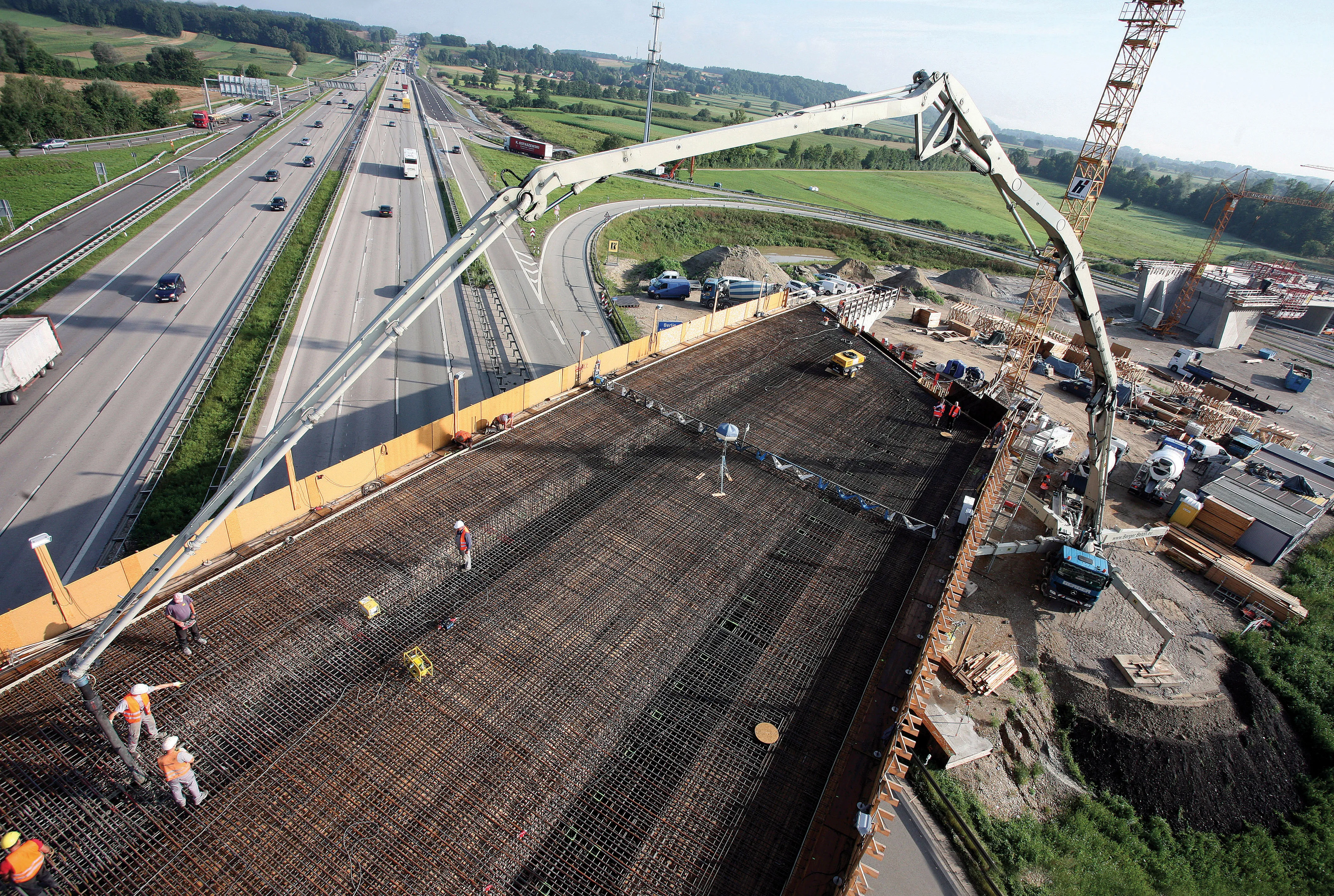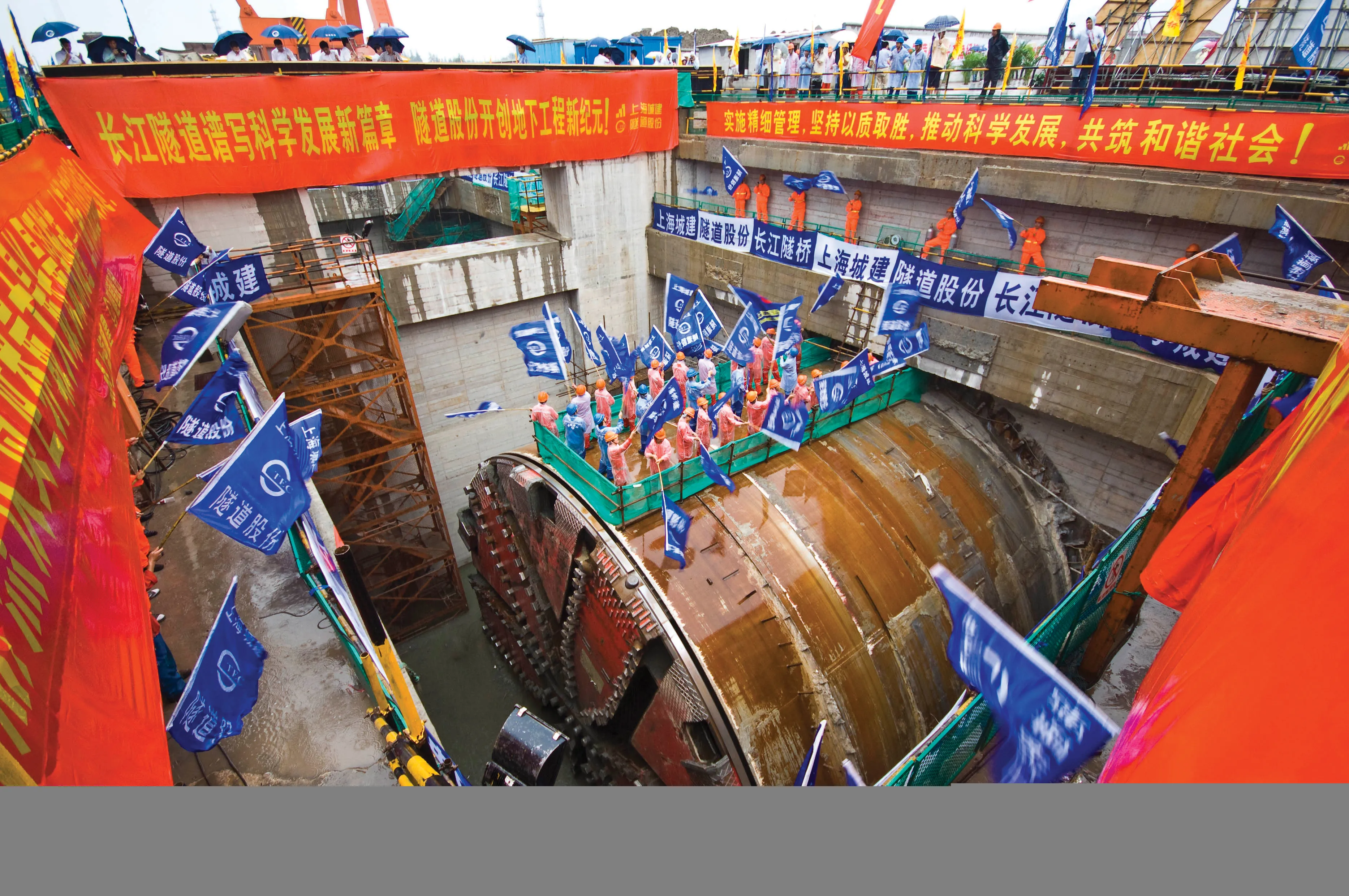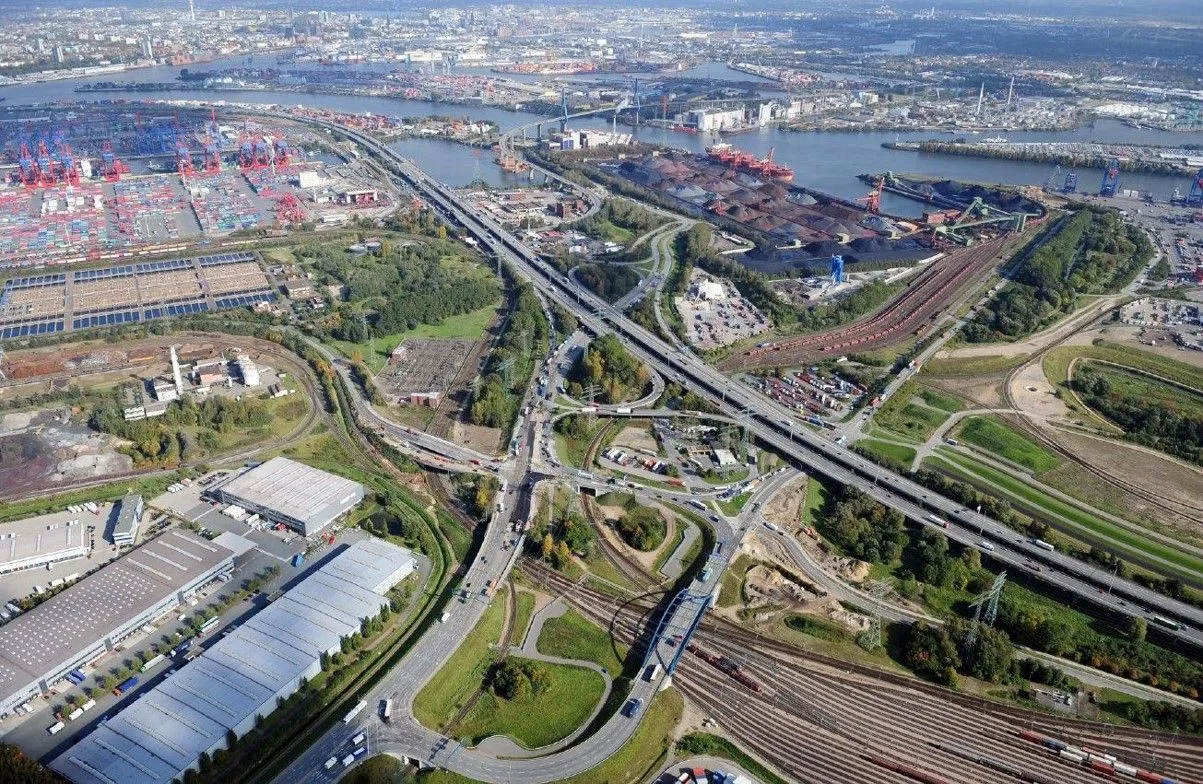Work on a major upgrade at a busy German road junction is expected to be completed by the end of 2011. To assist in the project, two Putzmeister large-boom concrete pumps, an M 58-5 from Berger Beton and an M 62-6 from BFM Betonförderdienst in Munich, arrived at the Neufahrn motorway junction, north of the city.
May 3, 2012
Read time: 3 mins

Work on a major upgrade at a busy German road junction is expected to be completed by the end of 2011.
To assist in the project, two1259 Putzmeister large-boom concrete pumps, an M 58-5 from Berger Beton and an M 62-6 from BFM Betonförderdienst in Munich, arrived at the Neufahrn motorway junction, north of the city.
The junction, when viewed from above, looks like a flatly pressed four-leaf clover, and can no longer cope with traffic volumes. Two national motorways, the A 9 and the A 92, intersect at the junction, and along with the Munich motorway ring road (A 99) and the A 8 Ulm-Munich-Salzburg, the A 9 is the most important north-south route, especially for domestic and international commercial and holiday traffic.
The A 92 connects Munich with its airport and is also important for Eastern European traffic.
The average volume of traffic from the airport towards Munich is currently approximately 24,000/day, with the average daily traffic flow predicted to increase to about 38,000/day by 2020, meaning some 1,600 vehicles/hour using the Neufahrn junction, along with rush-hour traffic.
In view of this projection, the only option is a speedy connection via the existing motorway junction using a direct ramp. The current singlelane exit via a quadrant of the clover is being completely replaced by a two-lane flyover to channel traffic from the A 92 to the A 9 towards the south.
The customer is Autobahndirektion Südbayern and the contractor is Hentschke Bau in Bautzen.
Construction work at the junction started in April 2009 with the reconstruction of a connecting ramp and the spillage that is required to build the new bridge, with 110,000m³ of delivered soil. In 2010, comprehensive excavation and ceiling work took place at the Neufahrn junction as well as bridge construction work in the whole area.
At the flyover, concreting of the first 120m section was completed in October, 2010, and this was followed by the 80m-long section two scaffolding work carried out at night.
Each of the two Putzmeister truck-mounted concrete pumps was fully-supported at the foot of one of the construction columns within one of the northern clover quadrants of the motorway junction. From this location, they pumped concrete to the concrete placement sites on the approximately 12m high bridge, while traffic flowed freely on the circular paths of the exits and under the structure.
Concreting started at 6am, with the two truck-mounted concrete pumps standing fullysupported at the foot of one of the construction columns within one of the northern clover quadrants of the motorway junction. From this location, they pump concrete to the sites of concrete placement on the approx. 12m high bridge.
Meanwhile, the traffic flows freely on the circular paths of the exits and under the structure.
The complete superstructure contains 3,400m³ of concrete, and so that traffic can travel on the road comfortably and safely, the finished concrete surface receives another 8cm thick layer to the overall construction.
The concrete is first primed and completely sealed using epoxy resin. An asphalt sheeting (0.5cm) comes next and then a protective layer of mastic asphalt (3.5cm thick). Finally, the surface of the road is formed by a 4cm surface layer of stone mastic asphalt.
To assist in the project, two
The junction, when viewed from above, looks like a flatly pressed four-leaf clover, and can no longer cope with traffic volumes. Two national motorways, the A 9 and the A 92, intersect at the junction, and along with the Munich motorway ring road (A 99) and the A 8 Ulm-Munich-Salzburg, the A 9 is the most important north-south route, especially for domestic and international commercial and holiday traffic.
The A 92 connects Munich with its airport and is also important for Eastern European traffic.
The average volume of traffic from the airport towards Munich is currently approximately 24,000/day, with the average daily traffic flow predicted to increase to about 38,000/day by 2020, meaning some 1,600 vehicles/hour using the Neufahrn junction, along with rush-hour traffic.
In view of this projection, the only option is a speedy connection via the existing motorway junction using a direct ramp. The current singlelane exit via a quadrant of the clover is being completely replaced by a two-lane flyover to channel traffic from the A 92 to the A 9 towards the south.
The customer is Autobahndirektion Südbayern and the contractor is Hentschke Bau in Bautzen.
Construction work at the junction started in April 2009 with the reconstruction of a connecting ramp and the spillage that is required to build the new bridge, with 110,000m³ of delivered soil. In 2010, comprehensive excavation and ceiling work took place at the Neufahrn junction as well as bridge construction work in the whole area.
At the flyover, concreting of the first 120m section was completed in October, 2010, and this was followed by the 80m-long section two scaffolding work carried out at night.
Each of the two Putzmeister truck-mounted concrete pumps was fully-supported at the foot of one of the construction columns within one of the northern clover quadrants of the motorway junction. From this location, they pumped concrete to the concrete placement sites on the approximately 12m high bridge, while traffic flowed freely on the circular paths of the exits and under the structure.
Concreting started at 6am, with the two truck-mounted concrete pumps standing fullysupported at the foot of one of the construction columns within one of the northern clover quadrants of the motorway junction. From this location, they pump concrete to the sites of concrete placement on the approx. 12m high bridge.
Meanwhile, the traffic flows freely on the circular paths of the exits and under the structure.
The complete superstructure contains 3,400m³ of concrete, and so that traffic can travel on the road comfortably and safely, the finished concrete surface receives another 8cm thick layer to the overall construction.
The concrete is first primed and completely sealed using epoxy resin. An asphalt sheeting (0.5cm) comes next and then a protective layer of mastic asphalt (3.5cm thick). Finally, the surface of the road is formed by a 4cm surface layer of stone mastic asphalt.








